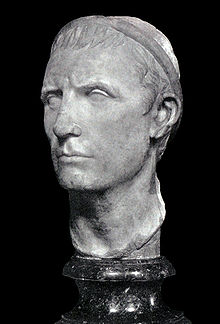พระเจ้าแอนทิโอคัสมหาราช
พระเจ้าแอนทิโอคัสมหาราช (ภาษากรีก: Ἀντίoχoς Μέγας; อังกฤษ: Antiochus III the Great, 241 - 187 ปีก่อนคริสตกาล)[1] เป็นกษัตริย์กรีกและผู้ปกครององค์ที่ 6 ของ จักรวรรดิซิลูซิด[2][3][4] พระองค์ทรงปกครองเหนือภูมิภาคซีเรียและพื้นที่ส่วนใหญ่ของ เอเชียตะวันตกเฉียงใต้ ในช่วงปลายศตวรรษที่ 3 ก่อนคริสตกาล ขึ้นครองสิริราชสมบัติเมื่อพระชนมายุได้ 18 พรรษาใน 222 ปีก่อนคริสตกาล การรบในช่วงต้นของพระองค์ต่อสู้กับ ราชอาณาจักรทอเลมี

อ้างอิง แก้
- ↑ "Antiochus III the Great". Livius.org. เก็บจากแหล่งเดิมเมื่อ 2020-05-04. สืบค้นเมื่อ 2020-03-26.
- ↑ Davies, Philip R. (2002). Second Temple studies III: studies in politics, class, and material culture. Continuum International Publishing Group. p. 95. ISBN 978-0-8264-6030-1.
The difference is that from the perspective of Antiochus III, the Greek king of a Greek empire, or from the later point of view of a head of state communicating with a Greek city-state
- ↑ Garg, Gaṅgā Rām (1992). Encyclopaedia of the Hindu world, Volume 2. Concept Publishing Company. p. 510. ISBN 978-81-7022-375-7.
Antiochus III the Great. Greek king who ruled an empire including Syria and western Asia (including Mesopotamia and Iran) towards the end of the 3rd century BC. It was during his time that Bactria became independent under Euthydemos. Shortly afterwards Antiochus III crossed the Hindu Kush and attacked an Indian prince named Subhagasena (Sophagasenas of the classical writers) who ruled over the Kabul valley. Antiochus III defeated Subhagasena, extorted from him a large cash indemnity and many elephants before he went back to his country. This invasion produced no permanent effect.
- ↑ Jones, Peter V.; Sidwell, Keith C. (1997). The World of Rome: An Introduction to Roman Culture. Cambridge University Press. p. 20. ISBN 978-0-521-38600-5.
Antiochus III, the Greek king of Syria (the dynasty there was called 'Seleucid'), was busily expanding in Asia Minor and in 196 BC even crossed into Europe to annex part of Thrace.
วิกิมีเดียคอมมอนส์มีสื่อที่เกี่ยวข้องกับ พระเจ้าแอนทิโอคัสมหาราช